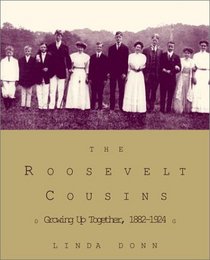Search -
The Roosevelt Cousins: Growing Up Together, 1882-1924
The Roosevelt Cousins Growing Up Together 18821924
Author:
At the turn of the twentieth century, in the brownstones of New York City and the country houses of Long Island and the Hudson River Valley, a generation of young Roosevelt cousins shared carriage rides to school and dancing class. Together they rode their horses and fished and swam in landscapes they would know until the end of their lives. — Wh... more »
Author:
At the turn of the twentieth century, in the brownstones of New York City and the country houses of Long Island and the Hudson River Valley, a generation of young Roosevelt cousins shared carriage rides to school and dancing class. Together they rode their horses and fished and swam in landscapes they would know until the end of their lives. — Wh... more »
ISBN-13: 9780679446378
ISBN-10: 0679446370
Publication Date: 10/23/2001
Pages: 256
Edition: 1st ed
Rating: 3
ISBN-10: 0679446370
Publication Date: 10/23/2001
Pages: 256
Edition: 1st ed
Rating: 3
2.7 stars, based on 3 ratings
Genres:
- Biographies & Memoirs >> General
- Biographies & Memoirs >> Historical >> General
- Biographies & Memoirs >> Historical >> United States >> General
- Biographies & Memoirs >> Leaders & Notable People >> Presidents & Heads of State
- Biographies & Memoirs >> People, A-Z >> ( R ) >> Roosevelt, Theodore
- Biographies & Memoirs >> People, A-Z >> ( R ) >> Roosevelt, Franklin D.
- Biographies & Memoirs >> People, A-Z >> ( R ) >> Roosevelt, Eleanor
- History >> Americas >> United States >> 20th Century




